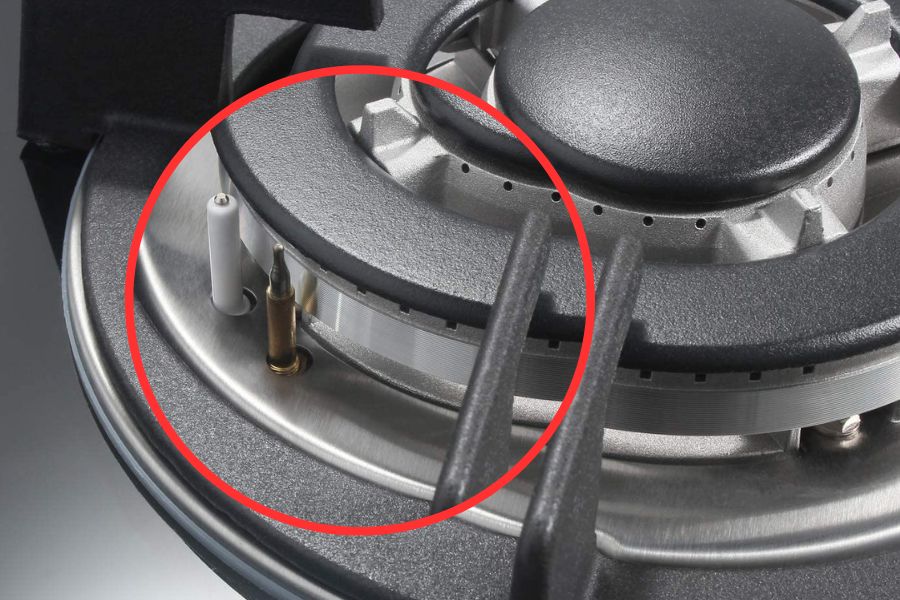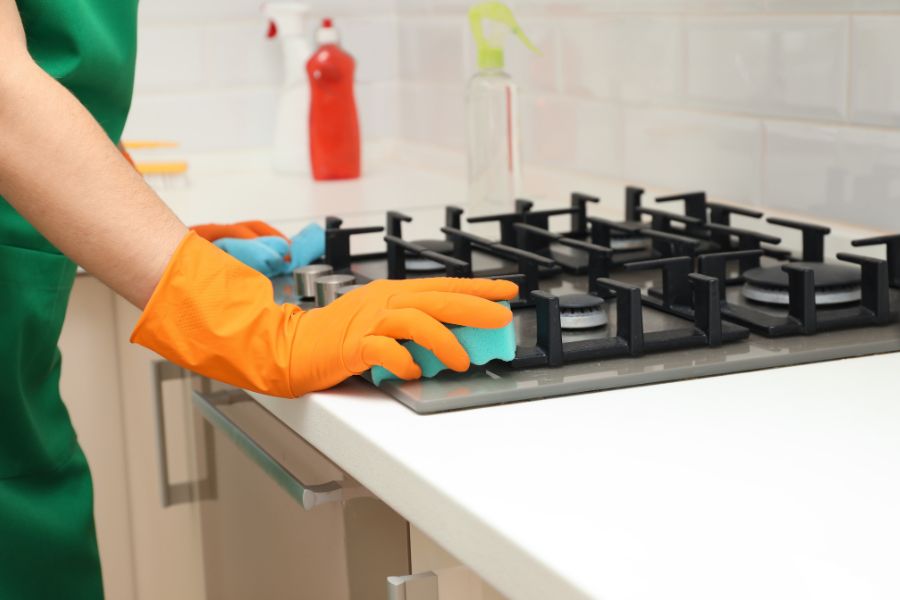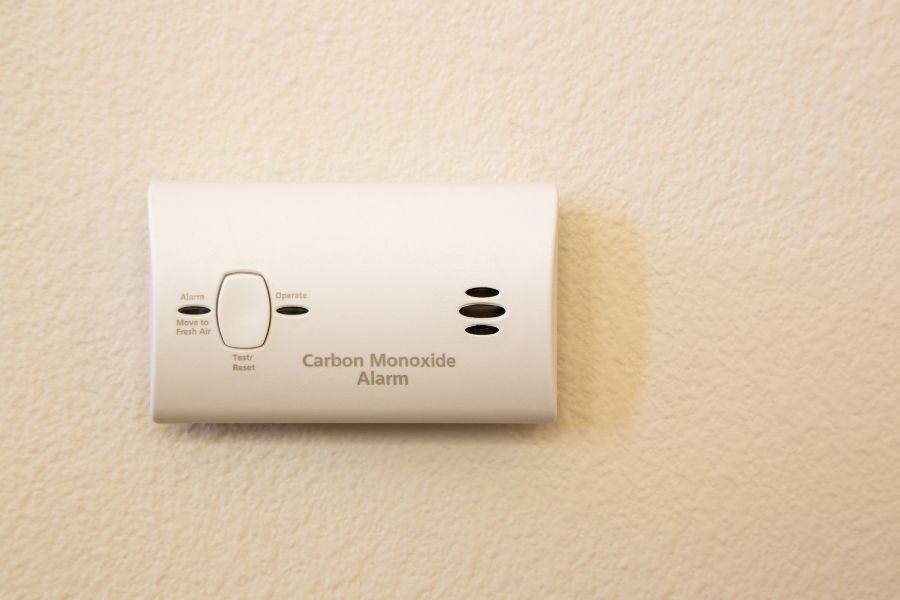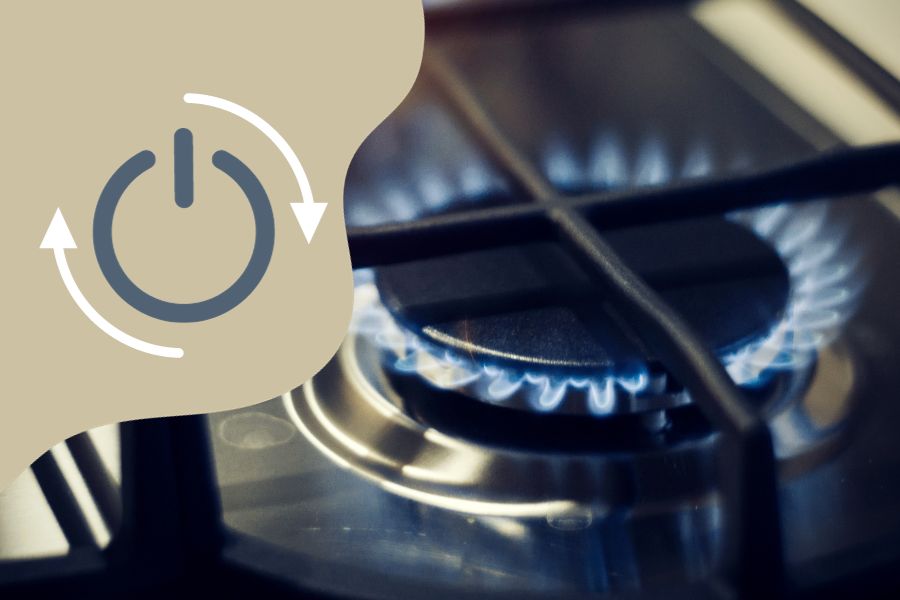Gas stoves have been a staple in households for many years, providing a convenient and efficient way to cook food. However, with this convenience comes the potential for safety hazards, such as gas leaks and fires.
One question that often arises regarding gas stoves is whether they turn off automatically. This is an important question, as an automatic shut-off mechanism can prevent dangerous situations.
Let us explore the functionality of gas stoves, including the safety features built into them and the types of automatic shut-off mechanisms available.
The Functionality of Gas Stoves

Gas stoves are the common household appliance that uses natural gas or propane to provide heat for cooking. The mechanics of a gas stove are relatively simple, consisting of a burner, a gas supply line, and a control valve. When you turn on a burner, the control valve opens, allowing gas to flow into the burner, where a spark or a pilot light ignites it. This results in a flame that heats the cookware on the burner.
While gas stoves are efficient and reliable, they can pose a safety hazard if not used properly. For this reason, gas stoves often come with safety features designed to prevent accidents. One of the most basic safety features is a pilot light, which ensures that the gas is always burning and prevents a buildup of unburned gas.
Another common safety feature is a flame failure device (FFD), which automatically shuts off the gas supply if the flame goes out. This prevents gas from continuing to flow into the room, which can cause a fire or an explosion.
In addition to these basic safety features, many gas stoves have advanced safety features, such as overheating protection and automatic shut-off mechanisms. These features detect dangerous situations and take action to prevent accidents. For example, an automatic shut-off mechanism can turn off the gas supply if it detects a gas leak or if the stove has been on for too long.
Understanding the mechanics of gas stoves and the safety features built into them is essential for safe and proper use. By being aware of these features, you can reduce the risk of accidents and ensure your gas stove is functioning properly.
Automatic Shut-off Mechanisms in Gas Stoves
Automatic shut-off mechanisms are an essential safety feature in gas stoves. They are designed to prevent gas leaks and fires by automatically turning off the gas supply when a dangerous situation is detected. There are several types of automatic shut-off mechanisms available in gas stoves, including:
- Thermocouple: This is a safety device that is activated by heat. It consists of a metal probe that is placed near the burner flame. If the flame goes out, the thermocouple detects the decrease in heat and shuts off the gas supply.

- Flame Sensing Rod: This is a safety device similar to a thermocouple. However, instead of detecting heat, it uses an electrical current to sense the presence of a flame. If the flame goes out, the electrical current is interrupted, and the gas supply is shut off.
- Gas Leak Detector: This safety device detects the presence of gas in the air. It uses a sensor to detect the gas and triggers an automatic shut-off if gas levels are too high.
- Timer Shut-off: This safety device is designed to prevent accidents caused by forgetfulness. It automatically shuts off the gas supply if the stove has been left on for too long.
These automatic shut-off mechanisms monitor the gas supply and detect dangerous situations. If the mechanism detects a dangerous situation, it activates and shuts off the gas supply to prevent accidents.
For example, if the flame goes out or if there is a gas leak, the automatic shut-off mechanism will activate and turn off the gas supply. This prevents gas from filling the room and reduces the risk of fires and explosions.
Understanding the types of automatic shut-off mechanisms available in gas stoves is important for ensuring safe and proper use. It is essential to regularly maintain these safety features to ensure they are functioning properly.
Importance of Proper Maintenance and Usage of Gas Stoves

Proper maintenance and usage of gas stoves are essential for ensuring their safe operation. Regular gas stove maintenance is necessary to ensure the automatic shut-off mechanisms function properly. Some of the maintenance activities that ensure the safe operation of gas stoves include:
- Regular Cleaning: Clean gas stoves regularly to prevent clogs and blockages in the gas supply line. You can remove the burners and clean them with warm soapy water.
- Checking for Gas Leaks: Gas leaks can be dangerous and should be addressed immediately. It is important to check for gas leaks regularly using a gas leak detector or listening to hissing sounds around the gas supply line.
- Inspecting the Burners: Inspect them regularly to ensure they function properly. If the flame is yellow instead of blue, this could indicate a problem with the gas supply or burner.
Tips for Safe Usage of Gas Stoves
In addition to regular maintenance, safe usage of gas stoves is also important. Some tips for the safe usage of gas stoves include:
- Never Leave a Gas Stove Unattended: Never leave it unattended, especially when used. This reduces the risk of accidents caused by forgetfulness.
- Use Proper Cookware: Using proper cookware can reduce the risk of accidents. Cookware should come with a flat bottom and fit the size of the burner to ensure proper heating.
- Keep the Area Around the Stove Clear: The area around the stove should be clean to prevent any flammable objects from coming into contact with the flame.
- Install a Carbon Monoxide Detector: Carbon monoxide is a dangerous gas that gas stoves can produce. A carbon monoxide detector can alert you if dangerous gas levels are present.

Following these tips and properly maintaining gas stoves can reduce the risk of accidents and ensure safe and proper operation.
Gas Stove Functionality and Safety Guides:
- What is an auto-ignition gas stove?
- Why Does a Gas Stove Not Need to Be Vented?
- What is an infrared gas stove?
- Does a gas stove need electricity?
- Do gas stoves have pilot lights?
- How Much Does a Stove Weigh
- How Hot Does a Stove Top Get
- Do Electric Stoves Use Gas?
- Can I Use Induction Pan on Gas Stove
- Do Home Buyers Prefer Gas Or Electric Stoves?
- Can You Put Gas Stove Grates in Dishwasher?
- How To Clean Electric Stove Coil Tops?
- Are Natural Gas and Propane Interchangeable
- Griddle for Glass Top Stove
Bottom Line
Gas stoves are a common and convenient appliance in many households. However, understanding their functionality and safety features is essential for safe and proper use. Automatic shut-off mechanisms are important safety features in gas stoves to prevent leaks and fires.
Several types of automatic shut-off mechanisms are available in gas stoves, including thermocouples, flame-sensing rods, gas leak detectors, and timer shut-offs. Proper maintenance of gas stoves is necessary to ensure the proper functioning of these safety features.
Tips for safe usage of gas stoves include never leaving a gas stove unattended, using proper cookware, keeping the area around the stove clear, and installing a carbon monoxide detector.
Following these guidelines can reduce the risk of accidents and ensure safe and proper use of gas stoves. It is important to remember that gas stoves are powerful appliances that can be dangerous if not used correctly. Understanding, maintaining, and using their safety features to prevent accidents is essential.
With proper maintenance and usage, gas stoves can be a safe and efficient appliance in any household.






